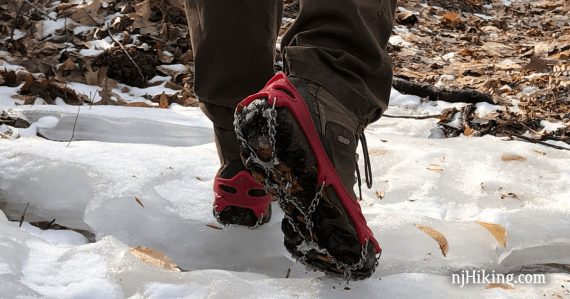

Mountaineering traction units will let you take pleasure in snow and ice lined trails extra safely.
There are three main methods to traverse trails with snow and ice: snowshoes, crampons, and traction units.
Snowshoes can be utilized for deeper snowy circumstances whereas crampons could also be higher in very icy circumstances.
Traction units that may be simply placed on over common mountaineering boots hit the candy spot in between.
These are additionally known as “mountaineering spikes” or “ice cleats”.
Word: These are our personal purchases and weren’t equipped by any firm for assessment.
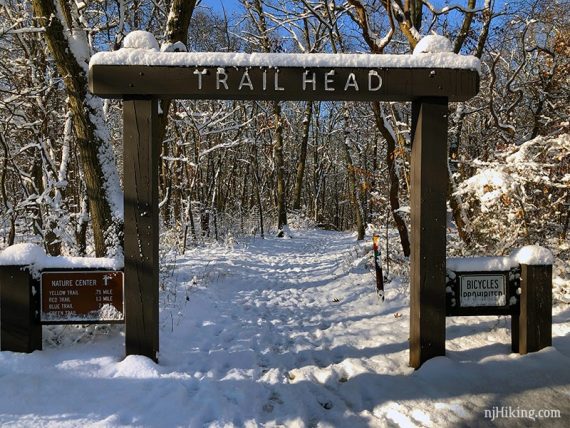

Two traction units we’ve used and appreciated for years are YakTrax and Kahtoola’s MICROspikes.
Each of those are stretched over mountaineering boots or sneakers, and will be eliminated comparatively simply.
Associated: Snowshoe Information and MSR Lightnings assessment and what Mountaineering Footwear we use.
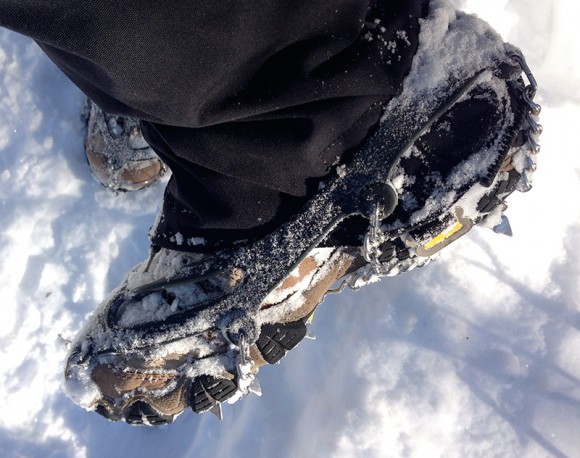

MICROspikes, with gaiter over low-cut Oboz mountaineering shoe (gals)
MICROspikes
A rubber body holds a sequence with steel spikes hooked up to it. These spikes grip icy and packed snow very well with out being as sharp or so long as a crampon spike.
Previous to getting MICROspikes, we used Yaktrax (see under) for years.
The MICROspikes took it to the subsequent degree and have actually made mountaineering in winter circumstances way more pleasing for us.
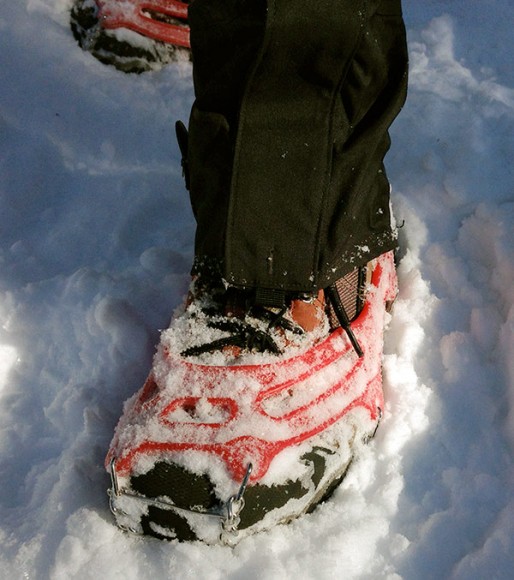

Entrance of MICROspikes on mid-cut Oboz mountaineering boot (guys), with gaiter
Having a safer footing means mountaineering with a traditional stride as a substitute of being overly hesitant on icy sections of the path or having the ability to go downhill with confidence.
We discover we usually tend to head out on a snowy path than we have been earlier than.
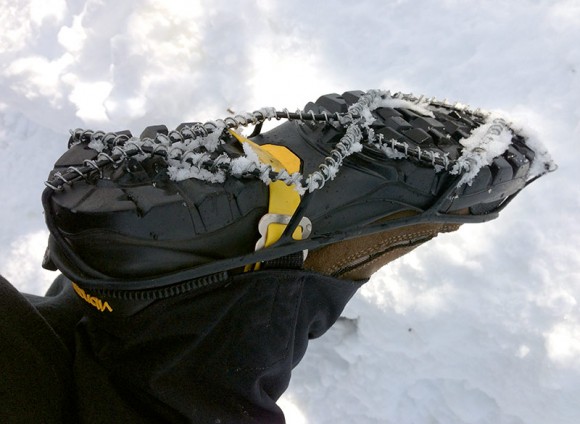

YakTrax (yellow strap is from a leg gaiter)
YakTrax
A rubber body holds steel coils for traction and is available in a number of varieties: Walkers, Professional (contains a strap over the shoe to safe), and Run (geared for path operating).
In addition they now provide “Ascent” and “Traverse” that use steel spikes just like MICROspikes, and “Diamond Grip” with steel studs and supposed for transitional terrain.
We purchased the unique YakTrax someplace within the early 2000’s once we began mountaineering extra within the winter.
Along with hikes, we used them for strolling on snowy/icy sidewalks and shoveling the driveway.
Associated: Presents for Hikers
The most important draw back was that they saved coming off, usually with out me realizing it, so I misplaced one… twice. They now provide a Professional model that has a strap to safe it.
Remember to purchase that model in any other case you would possibly find yourself shopping for a number of pairs like I did. They’ll additionally generally tend to get stretched out and be too free or break.
(Replace Winter 2016: My YakTrax lastly bit it and I changed them with the Professional model. As a result of I received new ones this insured we hardly acquired any snow to shovel.)
Associated: Winter Mountaineering Suggestions / Snowshoeing in New Jersey
MICROspikes vs YakTrax
Each units provide good traction in snow and ice, however there are distinct variations between the 2.
| MICROspikes | YakTrax |
|---|---|
| Common Value | |
| $75 | $35 |
| Grip on snow or ice | |
| Aggressive grip on snow and ice; can deal with hills on slippery surfaces | Good traction on snow, OK on ice |
| Sturdiness | |
| Heavy rubber body, steel chains, and spikes. Spikes can turn into uninteresting over time. | Skinny rubber body can get stretched out and/or break |
| Shoveling the driveway or strolling the canine down the road/sidewalk | |
| Not excellent, as soon as the driveway/sidewalk is evident the spikes will put on on a tough floor | Good |
| Frequent switching from snow/ice to laborious surfaces (i.e. a path that’s partially clear, has clear rocky areas, or having to cross pavement) | |
| Not excellent; laborious surfaces might probably uninteresting the spikes, barely awkward strolling spikes on pavement | Not a difficulty |
| Carrying when not in use | |
| Steel ideas are pointy however not razor sharp, heavier and bulkier than YakTrax; tote sack is now included | Gentle and compact, received’t put holes in gear or clothes, doesn’t want a bag/case |
| MICROspikes | YakTrax |
Different choices on this class (that we now have not examined however are standard on our web site):
How a lot snow is on the bottom? Snow Forecast and Snow Depth Maps
Our two cents
After extensively utilizing each, we favor the MICROspikes and doubtless wouldn’t return to YakTrax for mountaineering.
However we do use YakTrax for clearing our ice-prone driveway and sidewalk.
For the winter mountaineering circumstances we obtain in New Jersey, MICROspikes would cowl the wants of most avid hikers.
Nevertheless, YakTrax are a stable, cheaper choice with the bonus of being higher for shoveling the driveway or taking Fido out for a stroll. For the extra informal hiker, this may be the higher worth.
Total, if a traction system prevents a fall (and potential damage) simply as soon as then it was a purchase order effectively made.
This put up might include affiliate hyperlinks. We might obtain a fee for purchases made by means of these for gratis to you.
